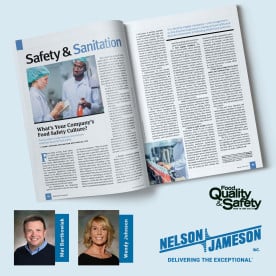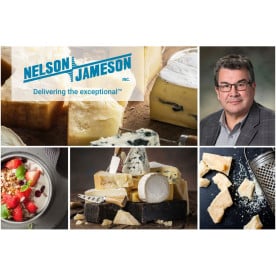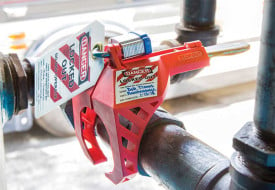Part three & conclusion of a conversation with John Nelson, CEO and Jerry Lippert, President of Nelson-Jameson, Inc.
In the last post we caught a glimpse of how Nelson-Jameson’s product offerings evolved over time. This time, it veers into a discussion of how they listen, observe, and anticipate customer needs.
Solutions for Our Customers
John: One of the biggest costs is product trapped in the supply chain itself. It is not really inventory at all; it is essentially just stuff that is on trucks and ships, doing nothing. Any disruption is of course, very expensive. We take that weight off of our customers’ shoulders even though they may not notice.
We refer to another problem that we solve as “lumpy loads.” We deliver everything from a tiny, little lightweight platinum device that is part of a pH meter, to things that are 500 pounds, and even some 240 gallon totes. The supply pipeline is different for each of them. Any or all may have to be delivered at the same time. Our challenge is to make transporting them fairly seamless.
We may not be able to carry some things on the same truck, like hazardous goods with food grade ingredients. The point I'm trying to make here is that there is no silver bullet, no easy solution. It is a challenge for us, but it is also, in some sense, our salvation. It is out of the reach of even our biggest customer to do this, and certainly for our smallest. These are among the services we proudly provide that the people who buy from us may not even be aware of.
Ensuring the Different Categories Function Together
Jerry: As I said previously, this is been an evolutionary thing. We think that our business model applies across the entire food processing industry. We have had to do some changing and adding in order to genuinely fulfill that idea. Most operations divide purchases into direct and indirect. For example, milk is a direct purchase, whereas most of what we provide would be called indirect purchases. The people who buy from us can have trouble managing their indirect purchase inventory, and that costs money.
The first area from our catalog is packaging supplies, ingredients, and chemicals. This area kind of relates to direct purchases, whereas the other areas are more related to indirect, though, there is no hard and fast rule.
The people who buy from us manage these different subsets of direct and indirect purchases differently. And it keeps changing. Forty years ago, most food plants, for instance, didn't even have laboratories. Only when safety and testing became critical did they develop their labs. So we developed a grouping around the laboratory to assist them.
The second category, MRO, a catchall for maintenance, repair, and operating supplies, is entirely made up of indirect purchases. These are items like gloves and hairnets and all of those incidentals our customers have to have, and that they often have trouble managing. This is also where some companies used to have fiefdoms: a bunch of guys buying stuff, making all kinds of PO's, with everyone thinking they were saving the company money when, in fact, they were costing the company a fortune in freight and money tied up in inventory. Today, our customers rely on our delivery system for these items. It serves a great function! They have come to depend on that truck arriving that Tuesday morning or whenever scheduled.
There is Always an Exception
Jerry: However, we found out that in our third area, process systems, buyers do not see our trucks as a value proposition. Our customers’ people in process systems are responsible for making sure that the lines keep functioning. They need to be sure the pumps and valves are there when they are needed! Frankly, they could care less about our truck being on time as scheduled dependably: they want that pump or valve when something goes wrong, and not a minute later!
Throughout the plant, they might have three of these valves locked up in lockers or in various corners, but invariably, when a valve breaks, they cannot find them! They want us to get a replacement part to them yesterday. Well, we cannot do it as quickly as yesterday, but we are quicker than just about anyone else, because we took the time to study and understand our customer’s point of view.
So the key is a customer focus. Having the categories work together is a critical part of this equation, and part of how we do that, by the way, is by having each of the areas understand their unique value proposition, and then we bring it together as an organization, hopefully, in how we market it to our customers.







